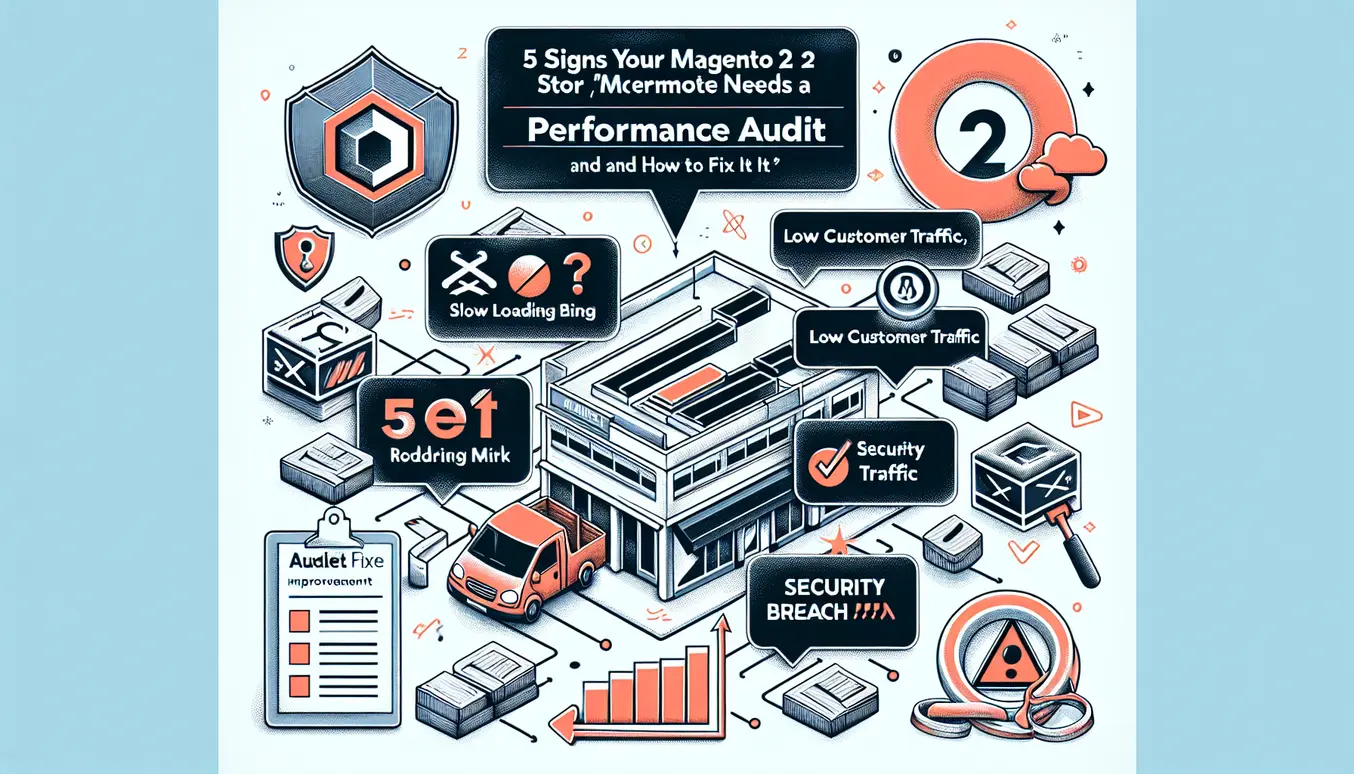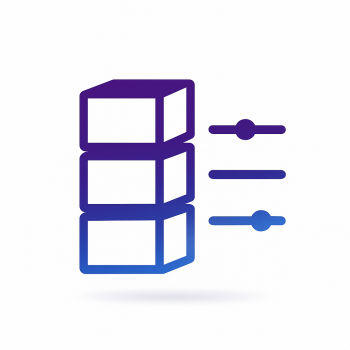5 Signs Your Magento 2 Store Needs a Performance Audit (And How to Fix It)

Slow stores are the e-commerce equivalent of a closed sign on your door. You won’t always notice it immediately, but your customers do—and so does your bottom line. If you run a Magento 2 store, a regular performance audit isn’t optional: it’s insurance. This post walks you through 5 clear signs your Magento 2 store needs an audit, a practical step-by-step audit methodology (free tools vs professional audit), specific technical fixes (including Varnish tuning, indexers, and how modules like Force Stock Status can help backend performance), a short anonymized case study with real metrics, and a natural call-to-action at the end.
Why a performance audit matters (quick primer)
Performance audits uncover bottlenecks that reduce conversions, increase bounce rates, and raise hosting costs. For Magento 2 stores, those bottlenecks can live in the frontend (slow assets, render-blocking JS), backend (heavy queries, slow indexers), caching layer (misconfigured Varnish or FPC), or infra (I/O, CPU, database). A focused audit gives you prioritized fixes with measurable impact.
Five signs your Magento 2 store needs a performance audit
1) Page load times consistently > 3s (desktop or mobile)
If your product pages, category pages, or checkout consistently load slower than ~3 seconds, that’s a clear red flag. Google’s research shows bounce rates jump dramatically as page load time increases. Use these quick checks:
- Run PageSpeed Insights or Lighthouse on key pages (homepage, top category, typical product, cart, checkout).
- Use a simple curl test to measure TTFB and total time from the server’s perspective:
curl -o /dev/null -s -w "%{time_starttransfer}s %{time_total}s\n" https://yourstore.com/product-slugtime_starttransfer is TTFB; time_total is full load (as curl sees it). If time_starttransfer is >0.6–1s on average, your server or PHP stack might be the bottleneck. If time_total >3s, the frontend needs attention (assets, blocking JS, images).
2) Browser console errors or long-running JS on product/category pages
Console errors and long-running scripts kill perceived performance. Check the browser console (F12) and Lighthouse’s diagnostics. Things to watch for:
- Uncaught JS exceptions that stop rendering.
- Third-party scripts blocking main thread (analytics, chat, trackers).
- Large synchronous JavaScript bundles impacting first contentful paint (FCP).
Use Chrome DevTools to profile main-thread work and identify heavy scripts. If a third-party script is blocking rendering, consider async/defer or loading it after critical rendering.
3) High cart abandonment, especially correlated with slow times
If analytics show spikes in abandonment at the cart or checkout and those spikes line up with slower loads, you probably have a performance-related revenue leak. Check your analytics funnel with time-based segments (e.g., sessions with page load >3s vs <2s). Look for differences in conversion rate and abandonment.
4) Frequent 500/503 errors, FPC misses, or cache thrashing
Server errors and Full Page Cache (FPC) miss rates tell you the cache layer isn’t working well. Signs include:
- Many 500/503 responses in server logs at peak times.
- FPC miss rate high (check varnish or your FPC tool metrics).
- Cache is being purged too often (bad cache tags or automated processes flushing everything).
On Varnish, you can inspect hit/miss stats with varnishstat. A healthy store should have a high hit ratio on catalog and product pages once warm.
5) Backend operations are slow (admin pages, imports, reindexing)
If admins complain that the product grid is slow, bulk imports time out, or reindexing takes hours, your store needs a backend performance check. Typical causes:
- Inefficient queries (custom modules or third-party extensions causing heavy joins).
- Indexers set to "update on save" causing lock contention under heavy updates.
- Inventory checks hitting the DB on every page load (can be improved with caching or specialized modules).
Quick checklist: what to capture before you start the audit
Before diving into fixes, collect baseline metrics so you can measure impact. Capture these:
- Average page load times (mobile and desktop) for key pages — Lighthouse and GTmetrix scores.
- TTFB averages and 95th percentile TTFB via curl or synthetic tests.
- Varnish/Redis cache hit/miss ratios.
- Database slow query log hits and CPU/IO usage on peak hours.
- Conversion funnel metrics: add-to-cart rate, cart abandonment, checkout conversion.
Audit methodology — step-by-step (free tools vs professional audit)
Phase 1: Quick triage with free tools (20–60 minutes)
Goal: detect obvious frontend and caching problems fast.
- Run Google PageSpeed Insights and Lighthouse for mobile and desktop on representative pages. Save the reports.
- Use GTmetrix and WebPageTest for waterfall and asset timing—these show which assets block rendering and where time is spent.
- Check server TTFB via curl (multi-run) and simple load tests (siege or ab) to see how the server responds under small load:
# small quick test with ApacheBench
ab -n 100 -c 5 https://yourstore.com/product-slug/
# or with siege
siege -c5 -t30S https://yourstore.com/product-slug/These are lightweight sanity checks; they don’t replace proper load testing under realistic traffic patterns, but they reveal immediate capacity issues.
Phase 2: Backend and infra checks (1–3 hours)
- Inspect Magento logs (var/log/system.log, var/log/exception.log) and webserver logs for errors and slow requests.
- Check MySQL slow query log and use pt-query-digest (Percona Toolkit) to find expensive queries.
- Verify PHP-FPM and MySQL resource usage (top, vmstat, iostat) during a small synthetic load.
- Check cron and indexer mode: set indexers to schedule if high admin activity causes lock issues:
# check indexer mode
bin/magento indexer:show-mode
# set all to schedule (if currently set to realtime and causing load)
bin/magento indexer:set-mode schedule
Also confirm Magento is in production mode (not developer):
bin/magento deploy:mode:show
bin/magento deploy:mode:set productionPhase 3: Cache and HTTP layer (Varnish, Redis, FPC)
Check your caching layers carefully—misconfigurations here cause the most visible problems.
- Is Full Page Cache enabled? Magento 2 supports Varnish out of the box—verify Varnish is in front of Magento. In admin: Stores > Configuration > Advanced > System > Full Page Cache.
- Check Varnish hit/miss via varnishstat. Look for high miss rates and frequent purge/poke events.
- Verify Redis for session and cache backend. Check memory usage and eviction stats. Use redis-cli INFO stats and INFO memory.
Phase 4: Deep profiling (if issues persist)
For stubborn problems, use profiler tools like Blackfire, Tideways, or New Relic APM. These reveal hot functions, slow queries, and heavy endpoints. A professional audit often includes this level of profiling and a prioritized remediation plan.
Free tools vs professional audit — when to call an expert
Free tools (Lighthouse, GTmetrix, WebPageTest, curl, ab) are great for initial triage. They find frontal problems (large images, blocking JS, missing cache headers). But they don’t easily reveal deeper problems like inefficient SQL, lock contention, poorly implemented extensions, or tricky Varnish TTL logic.
Call a professional audit when:
- Performance is business-critical (high traffic or revenue).
- You see backend slowness (DB bottlenecks, long-running indexers).
- You need code-level fixes or architecture changes (migration to Redis clusters, scaling DB, Varnish tuning).
Practical technical solutions (concrete examples and code)
Below are specific actions you can take with example commands and config snippets to make fixes fast.
1) Ensure Magento is in production mode and optimized
# Switch to production mode
bin/magento deploy:mode:set production
# Compile DI and deploy static content
bin/magento setup:di:compile
bin/magento setup:static-content:deploy -f
# Clean and flush cache
bin/magento cache:clean
bin/magento cache:flush
These steps reduce runtime compilation and speed up PHP responses.
2) Varnish tuning basics (VCL snippet and tips)
Varnish is a key piece in Magento 2 performance. A typical optimization: increase TTL for cacheable pages, use grace mode for backend slowdowns, and ensure correct cache key hashing to maximize hits.
# excerpt from VCL vcl_recv and vcl_backend_response
sub vcl_recv {
# normalize cookies for static assets
if (req.url ~ "\.(png|gif|jpg|jpeg|css|js)$") {
unset req.http.Cookie;
}
}
sub vcl_backend_response {
# set TTL for cacheable responses
if (bereq.url ~ "^/category/|^/product/") {
set beresp.ttl = 1h;
set beresp.grace = 6h;
} else {
set beresp.ttl = 10m;
}
}
Important Varnish knobs:
- beresp.ttl — how long to serve cached content before revalidating.
- beresp.grace — serve stale content while backend is slow or restarting (avoids 503s).
- Proper purge rules — don’t purge entire site on small changes; use fine-grained cache tags.
3) Use Redis properly for cache and sessions
Magento supports Redis for page cache and default cache backend. Basic redis.conf changes and Magento config can help avoid evictions.
# in app/etc/env.php
'cache' => [
'frontend' => [
'default' => [
'backend' => 'Cm_Cache_Backend_Redis',
'backend_options' => [
'server' => '127.0.0.1',
'port' => '6379',
'database' => '0',
'compress_data' => '1'
]
],
'page_cache' => [
'backend' => 'Cm_Cache_Backend_Redis',
'backend_options' => [
'server' => '127.0.0.1',
'port' => '6379',
'database' => '1',
'compress_data' => '0'
]
]
]
]
On Redis server, watch maxmemory-policy (volatile-lru or allkeys-lru depending on use) and memory limits to avoid unexpected evictions which cause cache thrashing.
4) Indexers and cron — set indexers to schedule and ensure cron runs smoothly
Indexers running constantly in real-time can cause locks. For stores with heavy catalog updates, schedule indexers and run them via cron during off-peak windows.
# set indexers to schedule
bin/magento indexer:set-mode schedule
# check cron status and last runs via system cron log or magento cron:run
crontab -l
# run manually if needed
bin/magento cron:run5) Reduce third-party script impact and lazy-load non-critical assets
Use async/defer on third-party scripts where possible. Lazy-load images and iframes below the fold. Example: lazy-loading images with native loading attribute.
<img src="/media/catalog/product/large.jpg" loading="lazy" alt="Product" />6) Improve backend stock checks with caches or modules
Stock checks can be expensive at scale—every product view might trigger queries or API calls. Modules like Force Stock Status (and other inventory-caching extensions) cache stock status and reduce repeated DB hits. Typical approaches:
- Cache stock status in Redis with short TTL (e.g., 30–300 seconds) to keep freshness while reducing DB pressure.
- Use asynchronous inventory updates for high-frequency updates (instead of heavy sync checks on every page view).
Example pseudo-code for a simple Redis-backed stock-check (conceptual):
# Pseudo-code (not a drop-in module)
function getStockStatus(productId) {
key = "stock:" + productId
status = redis.get(key)
if (status != null) {
return status
}
status = queryDatabaseForStock(productId)
redis.setex(key, 120, status) # cache for 2 minutes
return status
}
How to measure the impact of changes (before/after)
Always measure before and after. Useful metrics:
- Average page load time and TTFB (Lighthouse & curl).
- GTmetrix or WebPageTest waterfall times for key pages.
- Varnish and Redis hit rates.
- Conversion funnel metrics and cart abandonment from analytics.
Capture a 7–14 day baseline to smooth variability, then run the same tests for the same period after changes. Use A/B or time-window comparisons if possible.
Concrete case: audit, fixes, and impact on conversion
Here’s an anonymized, realistic example from a mid-size Magento 2 ecommerce store.
Baseline
- Homepage average load: 6.8s (mobile), 4.2s (desktop)
- Product page average load: 7.1s mobile
- TTFB 95th percentile: 1.8s
- Varnish hit ratio: 32%
- Cart abandonment rate: 72%
- Conversion rate: 0.9%
Audit highlights
- Large unoptimized images and render-blocking third-party scripts on product pages.
- Varnish configured with low TTL and missing grace, causing misses under load.
- Redis was close to eviction due to small memory pool and cache thrashing.
- Inventory status was checked synchronously on every product view; a third-party extension made heavy queries on the product grid in admin.
Remediations applied
- Optimized images and moved non-critical scripts to async/defer (3–5 days of work).
- Tuned Varnish: increased beresp.ttl for catalog pages to 1 hour, added beresp.grace 6 hours, improved purge rules.
- Increased Redis memory allocation and switched to volatile-lru for session cache. Adjusted Magento’s env.php per earlier snippet.
- Installed and configured a stock-status caching module that caches stock for 2 minutes and reduced inventory queries on product views.
- Set indexers to schedule and moved heavy import jobs to off-peak windows.
Results (4 weeks after fixes)
- Homepage load time: 1.9s mobile (from 6.8s)
- Product page load time: 1.7s mobile (from 7.1s)
- TTFB 95th percentile: 0.5s (from 1.8s)
- Varnish hit ratio: 87% (from 32%)
- Cart abandonment: fell to 58% (from 72%)
- Conversion rate: rose to 1.4% (from 0.9%)
These improvements translated into a measurable revenue uplift that more than covered the audit and remediation costs within weeks. This example shows why a prioritized audit with both frontend and backend fixes pays off.
Common pitfalls and what to avoid
- Purging the entire cache when you can purge by tag—this kills cache hit ratios.
- Setting Varnish TTL too low for catalog pages—causes misses and more backend load.
- Not monitoring Redis evictions and memory usage—unexpected evictions mean caches are not effective.
- Overloading the DB with real-time inventory checks—use caching or specialized modules.
Checklist of quick wins (actionable, do these first)
- Switch Magento to production mode and deploy static assets.
- Enable and verify Varnish as FPC; add a grace period in your VCL.
- Move third-party scripts to async or defer; lazy-load images.
- Use Redis for cache and session, and increase memory limits to avoid evictions.
- Set indexers to schedule and ensure cron runs correctly.
- Consider a stock-status caching module (e.g., Force Stock Status type) to reduce repeated DB hits for inventory.
When to reach out for a personalized audit
If you’ve tried the quick wins and still see slow pages, high TTFB, or backend bottlenecks, it’s time for a deeper audit. A professional audit typically includes:
- Full profiling (Blackfire, Tideways, or New Relic) to find code hot-spots.
- DB query analysis and schema/SQL optimizations.
- Varnish and CDN architecture review and tuning.
- Prioritized remediation plan with expected business impact and rollout steps.
At MageFine, audits combine automated diagnostics with a manual code and infra review so you get both fast wins and long-term fixes. If you want, you can start with our free triage and then choose a full paid audit if needed.
How MageFine extensions and hosting can help
MageFine provides Magento 2 extensions and hosting optimized for performance. Extensions that reduce backend load (for example, inventory caching or optimized stock status modules) and hosting plans with tuned Varnish/Redis stacks shorten the path from diagnosis to improvement. If you prefer a managed option, MageFine hosting plans include optimized caches and monitoring that reduce the time to value.
Final thoughts — make speed part of your regular checklist
Performance isn’t a one-shot task. Add a lightweight performance checklist to your release process: run Lighthouse and a quick curl TTFB check on staging before deploy, validate Varnish cache behaviour after product imports, and keep an eye on Redis memory/evictions. Small, consistent checks prevent the big, revenue-killing slowdowns.
Next steps — quick starter plan (30–90 days)
- Week 1: Baseline collection (Lighthouse, GTmetrix, TTFB), set Magento to production, deploy static assets.
- Week 2: Varnish + Redis quick tune, enable grace period, increase Redis memory.
- Week 3–4: Frontend optimizations (lazy-load images, defer third-party scripts), cache stock status.
- Month 2: Profile backend (Blackfire/New Relic), fix top 3 slow queries or extension hotspots.
- Month 3: Re-measure funnels and fine-tune; consider a managed hosting move if you need deeper infra support.
Call to action
If any of the five signs above feel familiar, start with a quick triage—run Lighthouse, capture your TTFB, and check your Varnish hit rate. If you want a personalized audit and prioritized fixes tailored to your store, MageFine offers both one-off audits and packages that include optimization modules and hosting tuned for Magento 2. Reach out to get a custom plan (or try our free triage first).
Need a hand running the commands above or want us to look at your baseline metrics? Send over your GTmetrix/Lighthouse reports and a short description of the issues you see—we’ll point to the highest-impact fixes first.





